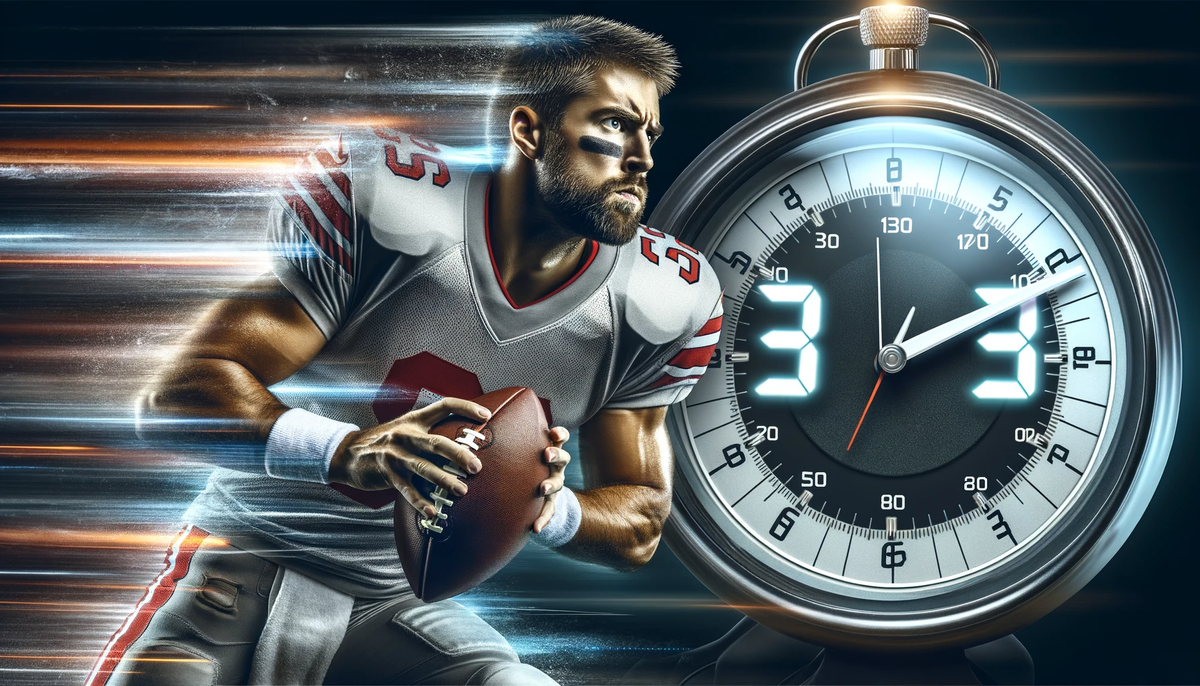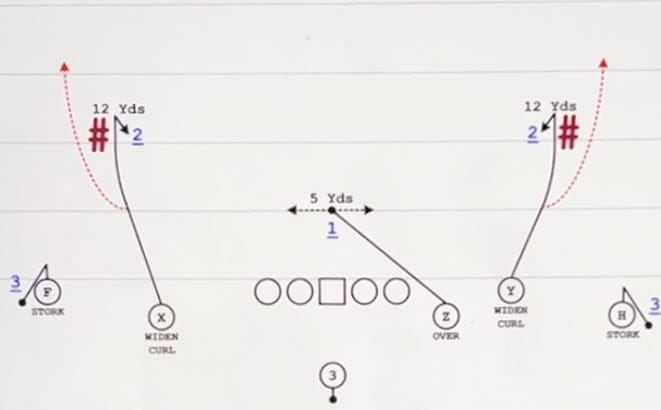How to Read NFL Defensive Coverages in Less than 3 Seconds

What would you do if you had to decipher an NFL coverage in less than three seconds? While daunting, you have tools at your disposal to ensure an accurate diagnosis. This blog will take you through common indicators that can help you read the coverage faster and, as a result, win more games.
If you want QB-specific throwing, lifting, and sprint training customized for you with NFL-level systems, take the assessment and get the app at kinetex.co. For insights on quarterbacking and throwing biomechanics, subscribe to the blog.
Man/Zone Indicators
The first step to diagnosing coverage is determining whether it’s man or zone. To do this pre-snap, one must use formations where the running back or tight end is displaced closest to the sideline.

You then look to see if a linebacker or safety is covering them. If they are, it’s some version of man coverage 99% of the time. This is common practice in the NFL, and an example illustrates this:
Scenario 1: You break the huddle with two play calls and put Christian McCaffrey out wide before the snap. A linebacker walks out to cover him. You know it's man coverage as a result, so you run the first play called in the huddle, as that play is optimized for man coverage.
Scenario 2: You see a cornerback over him. Now, you know it is zone, and you “can/kill” the play to the second one called in the huddle, which is better versus zone.
Knowing this allows you as a quarterback to:
a) Run a better play.
b) Anticipate where the ball will go faster, as you’ve been able to narrow down whether it is man or zone before the snap.
Not so fast though—once you narrow it down to zone, there are still multiple variations of zone coverage, from Cover 2 to Cover 3, to Cover 4, to Cover 6. So, what indicators should you use post-snap?
Safety Movement
The safeties are the best cue for figuring out the coverage post-snap. It is common to teach quarterbacks to glance at the boundary safety right when the ball is snapped to decipher the coverage. I would press on that notion and urge quarterbacks to broaden their gaze to both safeties and use their peripherals to feel the defensive backs. So, let’s walk through two examples:
Example 1: Lights are on, the crowd is roaring, and the ball is snapped—22 players start moving. You eye the safeties for a millisecond to see how they react. One safety rolls down to the three-wideout side, and the other rolls to the post. You feel the corners bail out, and because you’ve taken thousands of reps, you know this has to be Cover 3.
Example 2: The ball is snapped, the crowd is roaring, and the safeties widen and backpedal deeper right at the snap, while the corners are in press and following the wideouts. You know that this is Cover 2 Man. You use this information unconsciously, with an accumulation of reps, to anticipate where the ball will go within 3 seconds.
Knowing the coverage speeds up your progression, which leads to more efficient quarterback play.
General Rule of Thumb: Eye the safeties.
Other Options
The eyes of the defenders can also be a clue. If the defenders have their eyes on the wideouts and tight ends, then it is highly probable that it is man coverage. Defenders know this, and they sometimes disguise it pre-snap, so be aware.
Linebacker alignment is another critical clue. If the linebackers’ alignment is plussed or offset from their typical spot, then it's reasonable to assume either a) a blitz is coming, or b) a safety is rolling down. This doesn’t completely give away the coverage but it narrows down the options.
Conclusion
Why is this important? Deciphering coverage quicker leads to an ability to anticipate where the ball should go. When you get the ball out a half-second faster, that can turn you from being the high school backup to the starter, from a walk-on to a scholarship player, or from the practice squad to the 53-man roster.
A Note: I am most certainly leaving out other indicators, but these are some of the most common.
If you want QB-specific throwing, lifting, and sprint training customized for you with NFL-level systems, take the assessment and get the app at kinetex.co. For insights on quarterbacking and throwing biomechanics, subscribe to the blog.
